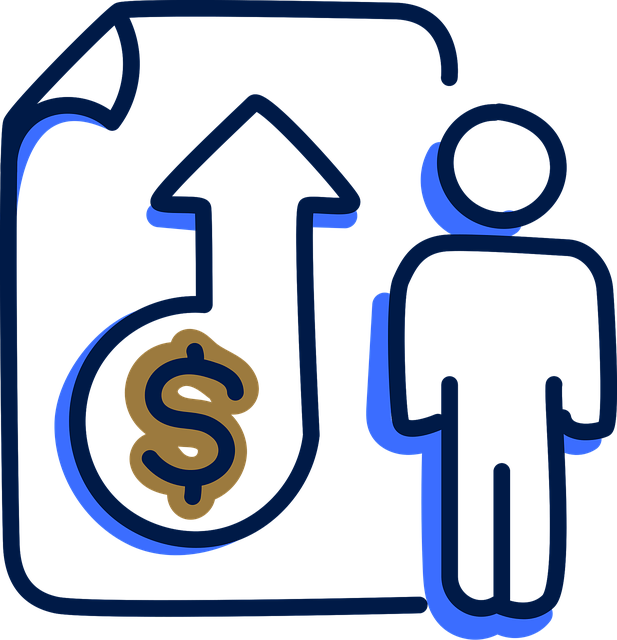Credit Card Debt Consolidation simplifies multiple credit card debts by combining them into a single loan with lower interest rates, saving money and streamlining repayment. It involves assessing current debt situations, comparing lender offers, understanding prepayment penalties, and evaluating the long-term impact on credit scores. Key steps include evaluating interest rates, minimum payments, remaining balances, and considering consolidation loans designed for credit cards. While it provides relief from high-interest debt, borrowing more money could extend repayment periods and increase overall costs, requiring careful assessment to avoid hidden fees and strict penalties.
Struggling with multiple credit card debts and personal loans? You’re not alone. Many people find themselves overwhelmed by high-interest payments. Fortunately, credit card debt consolidation offers a path to financial freedom. This comprehensive guide explores various consolidation options, from loans to strategic repayment plans. Learn about the pros and cons of each method, helping you make an informed decision. By understanding your choices, you can take control of your finances and bid adieu to overwhelming debt.
- Understanding Credit Card Debt Consolidation: A Comprehensive Guide
- Exploring Debt Consolidation Loans for Personal Loan and Credit Card Debts
- Advantages and Disadvantages of Credit Card Debt Consolidation
- Comparing Different Debt Consolidation Strategies
- Steps to Secure a Successful Credit Card Debt Consolidation
Understanding Credit Card Debt Consolidation: A Comprehensive Guide
Credit card debt consolidation is a strategic financial move that simplifies management of multiple credit card debts. It involves combining several credit card balances into a single loan with a potentially lower interest rate and more manageable terms. This approach not only streamlines repayment but can also save significant money over time by reducing the overall interest paid.
Understanding this process begins with assessing your current credit card situation. Evaluate the interest rates, minimum payments, and remaining balances on each card. A comprehensive guide would include steps like comparing loan offers from various lenders, considering consolidation loans specifically designed for credit cards, and evaluating the potential benefits, such as lower monthly payments and a single due date. Additionally, it’s crucial to explore prepayment penalties and understand the long-term impact on your credit score.
Exploring Debt Consolidation Loans for Personal Loan and Credit Card Debts
Debt consolidation loans offer a strategic approach to managing multiple debts, particularly personal loans and credit card balances. This option involves taking out a new loan with a lower interest rate to pay off existing debts, streamlining repayment into a single, more manageable payment. Such loans can significantly reduce monthly payments and the overall cost of debt, providing relief for those burdened by high-interest credit card debt.
By consolidating credit card debt, individuals can simplify their financial obligations and improve cash flow. These loans are particularly attractive as they often come with fixed interest rates, eliminating the worry of fluctuating rates on credit cards. This structured repayment plan allows borrowers to focus on rebuilding their financial health without the constant pressure of multiple due dates and varying interest charges.
Advantages and Disadvantages of Credit Card Debt Consolidation
Credit Card Debt Consolidation offers a strategic approach to managing multiple credit card debts by combining them into a single, more manageable loan. One of its primary advantages is simplified repayment; instead of making several minimum payments each month, borrowers have just one payment to track, which can reduce financial stress and save on interest costs over time. Additionally, consolidation can improve credit score as it demonstrates responsible debt management.
However, there are potential drawbacks. Consolidation typically involves taking out a new loan, which means borrowing more money and potentially extending the repayment period, leading to increased interest expenses overall. Furthermore, some consolidation loans may have strict prepayment penalties, restricting borrowers from paying off their debt ahead of schedule. It’s crucial for individuals considering this option to carefully evaluate their financial situation, compare interest rates and terms offered by various lenders, and ensure they choose a repayment plan aligned with their budget.
Comparing Different Debt Consolidation Strategies
When considering debt consolidation for personal loans and credit cards, it’s crucial to compare various strategies to find the best fit. Each approach has its own set of benefits and drawbacks. For instance, Credit Card Debt Consolidation often involves transferring high-interest credit card balances to a low-interest loan, providing immediate relief from mounting interest charges. This can be particularly advantageous for those with multiple cards and variable interest rates.
However, it’s important to assess the terms of such loans carefully. Some consolidation options may have hidden fees or shorter repayment periods, which could result in higher overall costs. Additionally, maintaining a good credit score while consolidating debt requires responsible financial management. Timely payments and keeping a low balance on the new loan are essential to avoid penalizing your creditworthiness.
Steps to Secure a Successful Credit Card Debt Consolidation
Securing a successful credit card debt consolidation involves several strategic steps. First, assess your current financial situation by listing all your debts and their corresponding interest rates. This helps in identifying areas where consolidation can offer significant savings. Next, consider your credit score; a good score often translates to better loan terms and lower interest rates during the consolidation process.
Research various debt consolidation options, such as balance transfer cards or personal loans with low-interest rates. Compare terms, fees, and conditions from different lenders to find the most favorable offer. Once you’ve chosen a suitable option, prepare necessary documentation for application, ensuring all details are accurate and complete. A thorough approach enhances your chances of approval and ensures you secure the best possible deal for your credit card debt consolidation.
Debt consolidation can be a powerful tool for managing and reducing credit card debt. By exploring options like debt consolidation loans or comparing strategies, individuals can navigate their financial landscape more effectively. Understanding both the advantages and disadvantages of credit card debt consolidation is key to making an informed decision. Following the outlined steps ensures a successful consolidation journey, potentially leading to financial freedom and better control over one’s money.
